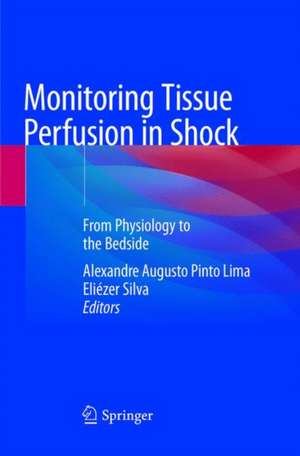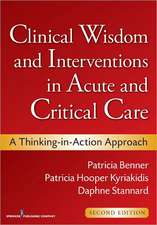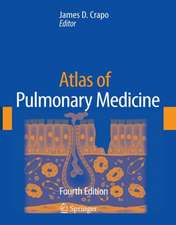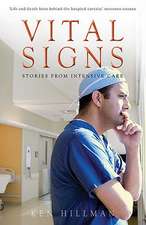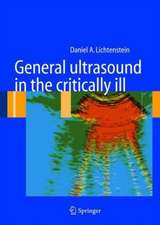Monitoring Tissue Perfusion in Shock: From Physiology to the Bedside
Editat de Alexandre Augusto Pinto Lima, Eliézer Silvaen Limba Engleză Paperback – 25 iul 2019
In the context of monitoring critically ill patients in the early hours of circulatory shock, it is essential to recognize changes in traditional parameters such as mean arterial pressure and cardiac output, and to assess the need for active intervention. However, even if global macrocirculatory variables are restored, abnormalities in tissue oxygenation may persist. Tissue hypoperfusion is connected to the development of organ failure and, if it goes unrecognized, may worsen the prognosis. As a result, there is a growing interest in methods for monitoring regional perfusion in peripheral tissues to predict or diagnose ongoing hypoperfusion.
In this work, eminent experts from a range of disciplines convey a working knowledge of how regional monitoring in shock can complement the conventional global parameters of oxygen transport, and demonstrate that real-time bedside assessment of tissue oxygenation is readily achievable using noninvasive monitoring techniques. Accordingly, the book offers a valuable, easy-to-use guide for the entire ICU team and other clinicians.
| Toate formatele și edițiile | Preț | Express |
|---|---|---|
| Paperback (1) | 517.95 lei 39-44 zile | |
| Springer International Publishing – 25 iul 2019 | 517.95 lei 39-44 zile | |
| Hardback (1) | 723.04 lei 39-44 zile | |
| Springer International Publishing – 15 iun 2018 | 723.04 lei 39-44 zile |
Preț: 517.95 lei
Preț vechi: 545.21 lei
-5% Nou
Puncte Express: 777
Preț estimativ în valută:
99.11€ • 105.98$ • 82.64£
99.11€ • 105.98$ • 82.64£
Carte tipărită la comandă
Livrare economică 14-19 aprilie
Preluare comenzi: 021 569.72.76
Specificații
ISBN-13: 9783030132576
ISBN-10: 3030132579
Pagini: 206
Ilustrații: VIII, 206 p. 34 illus., 17 illus. in color.
Dimensiuni: 155 x 235 mm
Ediția:Softcover reprint of the original 1st ed. 2018
Editura: Springer International Publishing
Colecția Springer
Locul publicării:Cham, Switzerland
ISBN-10: 3030132579
Pagini: 206
Ilustrații: VIII, 206 p. 34 illus., 17 illus. in color.
Dimensiuni: 155 x 235 mm
Ediția:Softcover reprint of the original 1st ed. 2018
Editura: Springer International Publishing
Colecția Springer
Locul publicării:Cham, Switzerland
Cuprins
Part I. Introduction.- Chapter 1. Holistic Monitoring and Treatment of Septic Shock.- Part II. Principles of Oxygen Transport and Consumption.- Chapter 2. Oxygen Transport and Tissue Utilization.- Chapter 3. Guyton at the Bedside.- Chapter 4. Tissue Response to Hypoxia and its Clinical Relevance: Hypoxic Hypoxia, Circulatory Hypoxia, Anemic Hypoxia, Cytopathic Hypoxia.- Part III. Measuring Tissue perfusion: Systemic Assessment of Tissue Perfusion.- Chapter 5. Cardiac Function (Cardiac Output and its Determinants).- Chapter 6. Oxygen Transport Assessment.- Chapter 7. Central and Mixed Venous O2 Saturation: A Physiological Appraisal.- Chapter 8. Central Venous-to-Arterial Carbon dioxide Partial Pressure Difference.- Chapter 9. Lactate.- Part IV. Measuring Tissue perfusion: Regional Assessment of Tissue Perfusion.- Chapter 10. Clinical Assessment.- Chapter 11. Optical Monitoring.- Chapter 12. Trans cutaneous O2 and CO2 Monitoring.- Chapter 13. Regional Capnography.- Chapter 14.Clinical Implications of Monitoring Tissue Perfusion in Cardiogenic Shock.
Recenzii
“The book highlights the fact that clinicians cannot improve microcirculation despite all their efforts to correct the macrocirculation. I recommend buying this book: it is a compilation of what is currently known about microcirculation and allows the reader to understand its importance.” (Yesim Cokay Abut, Anestesia & Analgesia, Vol. 128 (6), June, 2019)
Notă biografică
Alexandre Augusto Pinto Lima obtained his medical degree from Faculdade de Ciências Médicas de Santos, São Paulo, Brazil, in 1996. After an internship and residency in tropical infectious diseases and HIV medicine at Instituto de Infectologia Hospital Emilio Ribas, Universidade de São Paulo in 1999, he entered clinical training in clinical infectious diseases at the Division of Intensive Care Unit, Hospital Sírio Libanês, São Paulo. He then served as an assistant medical doctor in the Department of Infectious Diseases and Critical Care Medicine, Universidade de São Paulo, and the Department of Intensive Care Medicine, Hospital do Servidor Publico Estadual, São Paulo. Dr. Lima joined the circulation research group at Adult Intensive Care, Erasmus University Medical Center Rotterdam in 2005. There he gained his PhD under the supervision of Prof. Jan Bakker. His field of study is hemodynamic circulation, with emphasis on optical methods for measuring tissue oxygenation.
Textul de pe ultima copertă
This book describes various aspects of the basic physiological processes critical to tissue perfusion and cellular oxygenation, including the roles of the circulatory system, respiratory system, blood flow distribution and microcirculation.
In the context of monitoring critically ill patients in the early hours of circulatory shock, it is essential to recognize changes in traditional parameters such as mean arterial pressure and cardiac output, and to assess the need for active intervention. However, even if global macrocirculatory variables are restored, abnormalities in tissue oxygenation may persist. Tissue hypoperfusion is connected to the development of organ failure and, if it goes unrecognized, may worsen the prognosis. As a result, there is a growing interest in methods for monitoring regional perfusion in peripheral tissues to predict or diagnose ongoing hypoperfusion.
In this work, eminent experts from a range of disciplines convey a working knowledge of how regional monitoring in shock can complement the conventional global parameters of oxygen transport, and demonstrate that real-time bedside assessment of tissue oxygenation is readily achievable using noninvasive monitoring techniques. Accordingly, the book offers a valuable, easy-to-use guide for the entire ICU team and other clinicians.
In the context of monitoring critically ill patients in the early hours of circulatory shock, it is essential to recognize changes in traditional parameters such as mean arterial pressure and cardiac output, and to assess the need for active intervention. However, even if global macrocirculatory variables are restored, abnormalities in tissue oxygenation may persist. Tissue hypoperfusion is connected to the development of organ failure and, if it goes unrecognized, may worsen the prognosis. As a result, there is a growing interest in methods for monitoring regional perfusion in peripheral tissues to predict or diagnose ongoing hypoperfusion.
In this work, eminent experts from a range of disciplines convey a working knowledge of how regional monitoring in shock can complement the conventional global parameters of oxygen transport, and demonstrate that real-time bedside assessment of tissue oxygenation is readily achievable using noninvasive monitoring techniques. Accordingly, the book offers a valuable, easy-to-use guide for the entire ICU team and other clinicians.
Caracteristici
Shows the benefit of monitoring tissue oxygenation as a point-of-care test using noninvasive methods Demonstrates how evaluation of regional tissue oxygenation at the bedside is feasible and reproducible Represents an easy-to-use resource for the ICU team and other clinicians
